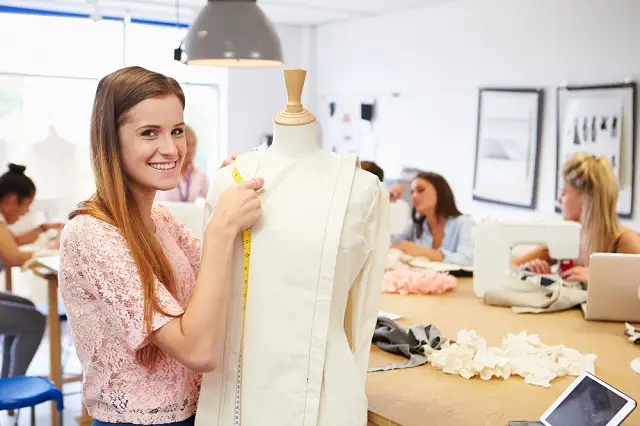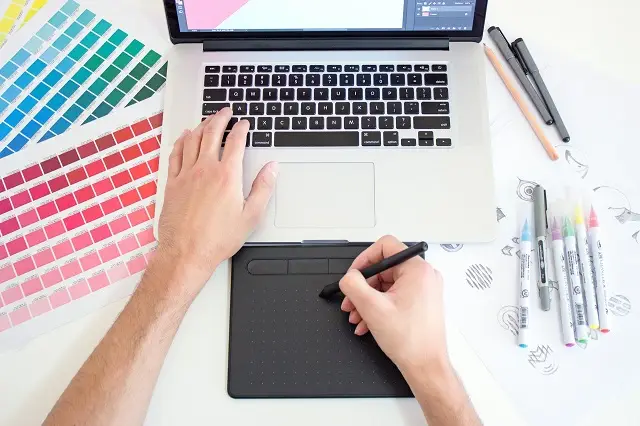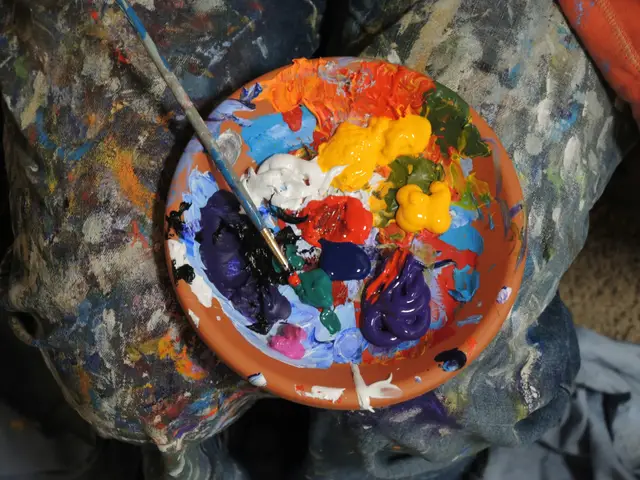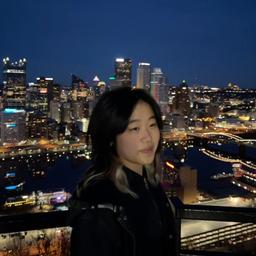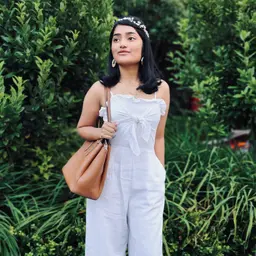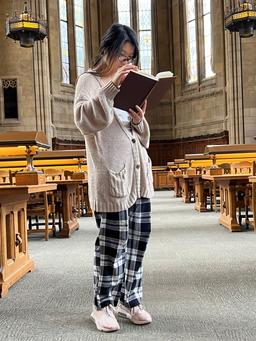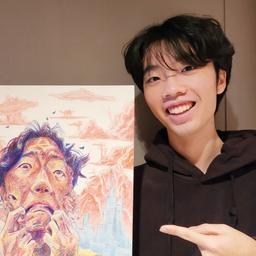Careers stemming from fine art and design research are diverse and impactful.
In fine art, individuals can become professional painters, sculptors, printmakers, art historians, or educators, contributing to the preservation and evolution of artistic traditions. These careers can take place in various settings, including art studios, galleries, museums, design firms, and academic institutions.
In design, careers may include graphic designers, industrial designers, architects, or user experience researchers. These professionals shape the visual and functional aspects of our surroundings, from the products we use to the spaces we inhabit. "Design thinking" can also be applied in fields like social innovation, where designers collaborate with communities to develop solutions for pressing challenges, showcasing the transformative potential of fine art and design research beyond traditional settings.
Artists and designers often engage in deep research to inform their creative practice, drawing inspiration from diverse sources to push the boundaries of their fields. Fine art research might involve understanding art movements, experimenting with new mediums, or exploring the cultural context of artistic expressions. In design, research often focuses on user experiences, materials, and the impact of design on society. Here are more specific examples:
Historical Research involves investigating the historical context, evolution, and influences of art movements, styles, and individual artists.
Material Studies explores the properties and possibilities of various artistic materials, from traditional mediums like oil paint to unconventional materials such as found objects.
Cultural Research examines the cultural, social, and political dimensions that influence artistic expressions and impact the reception of art within different societies.
Experimental Processes pursues innovative and exploratory methods, pushing the boundaries of traditional artistic practices and techniques.
User Experience Research is used to understand the needs, behaviors, and preferences of users to create products and experiences that are intuitive, efficient, and enjoyable.
Sustainable Design Research searches for environmentally friendly materials, processes, and approaches to reduce the ecological footprint of design practices.
Design Thinking for Social Innovation applies design principles to address social issues, collaborating with communities to develop solutions that improve quality of life and address societal challenges.
By now you have probably explored different art forms and design projects. Try your hand at lots of different mediums, including clay, wood carving, or experiment with digital tools. Don't worry if you're not an expert right away—enjoy the process of creating and discovering what you love. Talk to your art teachers—they are some of your strongest resources. Share your interests, ask for feedback, and seek advice on how to improve. Attend local art events, galleries, or exhibitions to get inspired and see what's happening in the art world. Engaging with the artistic community around you can open up new perspectives and opportunities.
As you develop your skills, think about what areas of fine art or design excite you the most. Research different career paths within these fields—there's a wide range of possibilities! Here are some more detailed ideas to help you on your way.
1. Take a Class in High School
If you're interested in pursuing a career in fine art and design, there are several high school classes that can provide a solid foundation. Apart from the obvious choices like visual arts and graphic design classes, consider the following:
Art History provides context and inspiration for your own work. It introduces you to various artistic movements, styles, and influential artists, fostering a deeper appreciation for the evolution of visual expression.
Photography basics can enhance your visual storytelling skills, even if you don’t choose photography as your final medium. It introduces you to composition, lighting, and the art of capturing moments—a valuable skill in various design fields.
Digital Media or Multimedia Arts help you gain proficiency in digital tools and multimedia platforms, crucial skills in an increasingly digital world. These classes teach you how to use software like Adobe Creative Suite, expanding your skill set for future design projects.
Marketing or Business help you understand the business side of art and design. Marketing classes can teach you how to promote your work, and basic business knowledge will be beneficial if you decide to freelance or start your own creative business. And many creative people pursue careers in advertising.
Psychology or Sociology can enhance your understanding of human behavior and societal dynamics, which is valuable in design. Knowing how people think and feel can help you create designs that resonate with your audience on a deeper level.
3D Modeling or Sculpture provide hands-on experience in creating three-dimensional art. Whether working with physical materials or digital tools, 3D skills are increasingly relevant in various design fields, including industrial design and animation.
English or Creative Writing can help you develop the ability to articulate your ideas, thoughts, and concepts effectively, all crucial in any artistic field.
High school is the perfect time to explore your interests and build a diverse skill set. Embrace the opportunity to try different things, and don't hesitate to step outside your comfort zone—it's all part of the creative adventure!
2. Read a Book
Here’s a list of foundational works and contemporary perspectives, providing a well-rounded intro to fine arts and design. We’ve listed separate options for design and fine arts, but these categories can be fluid. Exploring both can enrich your understanding of the broader creative landscape.
Foundational Classics In Design
The Elements of Color by Johannes Itten (1961) - Essential for understanding color theory, a crucial aspect of graphic and industrial design.
The Visual Elements: Line by Philip Rawson (1987) - Relevant for designers working with the visual impact of lines in layouts, typography, and overall composition.
The Bauhaus: Weimar, Dessau, Berlin, Chicago by Hans M. Wingler (1969) - Offers insights into the interdisciplinary design approach of the Bauhaus movement, influencing graphic and industrial design.
Grid Systems in Graphic Design by Josef Müller-Brockmann (1981) - A classic on grid-based design principles, crucial for graphic designers working on layouts and visual hierarchy.
The Non-Designer's Design Book by Robin Williams (2014) - A beginner-friendly guide to design fundamentals, perfect for those starting in graphic design.
Foundational Classics For Fine Arts:
Ways of Seeing by John Berger (1972) - More focused on art criticism and the philosophical aspects of fine arts, guiding individuals to rethink the perception of visual arts.
Interaction of Color by Josef Albers (1963) - Suitable for fine artists interested in the nuanced exploration of color and its perceptual effects in painting and other visual arts.
Art and Fear: Observations on the Perils (and Rewards) of Artmaking by David Bayles and Ted Orland (1993) - Explores the psychological aspects of being an artist, addressing common fears and challenges in the creative process.
Color and Light: A Guide for the Realist Painter by James Gurney (2010) - Offers practical insights into color and light in painting, valuable for fine artists seeking to master these elements.
Vincent van Gogh: The Life by Steven Naifeh and Gregory White Smith (2011) - A comprehensive biography of the iconic artist, providing a deep understanding of his life, struggles, and artistic journey.
The Story of Art by E.H. Gombrich (1950) - A classic art history book that presents a comprehensive overview of the history of art from prehistoric times to the modern era.
Recent Game-Changers in Design
Thinking with Type by Ellen Lupton (2004) - Specifically geared towards graphic designers and those interested in typography for digital and print media.
The Design of Everyday Things by Don Norman (1988) - Essential for interaction designers and those interested in the user experience design aspects of product and digital design.
Sprint: How to Solve Big Problems and Test New Ideas in Just Five Days by Jake Knapp (2016) - A guide to the design sprint process, beneficial for UX/UI designers and those involved in product design and innovation.
Don't Make Me Think by Steve Krug (2000) - A user-friendly guide to web usability, essential for designers working on user interfaces and digital experiences.
Recent Game Changers For Fine Arts:
The Art of Looking Sideways by Alan Fletcher (2001) - Offers a playful and eclectic exploration of creativity, making it suitable for artists seeking inspiration and unconventional perspectives.
Steal Like an Artist by Austin Kleon (2012) - Geared towards fine artists, encouraging a fresh approach to creativity and embracing influences in traditional and contemporary art.
The Creative's Guide to Starting a Business: How to turn your talent into a career by Harriet Kelsall (2016) - Tailored for artists looking to turn their creative skills into a business, providing practical advice on entrepreneurship.
The Artist's Way by Julia Cameron (1992) - A transformative guide to unlocking creativity, suitable for fine artists seeking to nurture their artistic expression.
Books are a great start, but the world of fine arts and design is dynamic, so staying curious and exploring a variety of sources will enrich your understanding of the field. You can follow design-focused websites like Behance, Dribbble, and AIGA for a constant stream of contemporary design projects and trends. When you have the chance, attend design conferences, exhibitions, and workshops to engage with industry professionals, learn about emerging trends, and network with fellow enthusiasts. Tune into design podcasts and webinars to gain insights from experts, stay informed about industry developments, and discover new perspectives. You can follow influential designers and design blogs on Instagram and Medium for daily doses of inspiration and updates on design discourse. Print journals like "Communication Arts" or "Eye Magazine" also give in-depth analysis and coverage of design trends.
3. Extracurricular Study
Remember that quality is often more important than quantity when it comes to extracurricular activities. Choose activities that genuinely interest you. Here are some ideas:
Collaborative Mural Projects, either within your school or community, allows you to work with diverse perspectives and learn about the dynamics of teamwork in creative endeavors. It provides practical experience in translating ideas into large-scale visual narratives, which is beneficial for artists and designers alike.
Upcycling and Sustainable Design Initiatives challenge you to think creatively about repurposing materials, a valuable skill for both fine artists and designers as sustainability becomes increasingly important in these fields.
Art Curation and Exhibition Planning gives you insights into the logistical aspects of presenting art to the public. This experience helps you understand the importance of context, lighting, and arrangement—crucial elements in both fine arts and design, especially for those interested in exhibition design.
Graphic Design for School Publications such as a school newspaper, magazine, or yearbook allows you to apply design principles in a practical setting, gain exposure to deadlines, and collaborate with writers and editors.
Photography Club or Contributions helps you develop your photography skills, understand how images complement written content, and gain experience in photo editing.
Local art institutions, museums, or university programs often offer summer or after-school programs. Don't hesitate to reach out to teachers, local artists, or design professionals to express your interest—they might know of unique opportunities. Online platforms like Behance, Dribbble, and university websites may also list research initiatives or creative projects near you. Remember, persistence and passion can open doors to exciting research experiences in the creative world!
Find research programs close to home
We’ll go into summer programs in more depth in the next section, but if you want to find all types of established fine arts and design research opportunities close to home, our High School Student Research Opportunities Database is an excellent resource. Click on your state, then search based on your location, institution, event type (in-person or virtual), and tuition (paid or free).
Work with a professor
If you have a clear idea of your passions, you can reach out to professors in your field to see if they are open to collaborating with you. Refer to our Guide to Cold-Emailing Professors (written by Polygence literature research mentor Daniel Hazard, a Ph.D. candidate at Princeton University).
Engage in your own research project
Students with initiative and focus can opt to tackle research independently. If you want to take a more academic route for your arts project, check out this post on how to write a self-guided research paper by Carly Taylor, a Stanford University senior who has completed several research projects this way.
Enter a competition
Competition deadlines provide a very helpful structure to keep your art or design project moving forward. For some ideas, check out these top 20 art and design competitions. Another benefit to attending a competition is meeting other students, teachers, and practicing professionals in the field you love most.
Here are some top picks for summer fine arts and design research programs. We chose them based on their affordability, name recognition, social opportunities, and academic rigor.
1. Rising Star Program
Hosting institution: Savannah College of Art and Design
Location: Savannah, GA, or Atlanta, GA
Length of program: 5 weeks
Eligibility: rising high school seniors
When to apply: at least 30 days before program start date (i.e. by May 16)
Tuition: $6,165 (payment plans available)
More information:
Rising high school seniors who are admitted to the program have the opportunity to experience college-level coursework at either the Savannah or the Atlanta campus. The many course offerings for 2024 include: Sewing Technology for Accessory Design, Introduction to Architecture, Fashion Aesthetics and Style, and more
2. School of the Art Institute of Chicago: Early College Program Summer Institute
Hosting institution: School of the Art Institute of Chicago
Location: Chicago, IL, or online
Length of program: 1 - 4 weeks
Eligibility: ages 15 - 18
When to apply: starting from November
Tuition: $1,785 - $7,140 (need-based and merit-based financial aid available)
SAIC is one of the most prestigious schools for art and design in the country. Their rigorous pre-college program includes several options for session dates in 2024:
Session 1: June 17–28 (2 weeks)
Session 2: July 1–12 (2 weeks)
Session 3: July 15–26 (2 weeks)
Session 4: July 1–26 (4 weeks)
Session 5: July 29–August 2 (1 week)
3. Paris College of Art Summer Program
Hosting institution: Paris College
Location: Paris (France) or online
Length of program: 2 weeks
Eligibility: ages 16 and up
When to apply: starting from mid-November
Tuition: € 2250 - € 2650
Language of instruction: English
PCA’s summer program is the only one on this list that is outside of the United States. Although it is in Paris, PCA is actually a U.S. institution, and all of the courses are taught in English: no French language experience is required. For their summer pre-college program, the available classes include: Fashion Illustration; Sensorial Perception of Space; Botanics, Drawing, and Printmaking; Creative Flow; Paris in Black & White; Paris Fashion Week: Street Style Fashion Photography; Writing the Short Film; Intro to Screenwriting; Contemporary Illustration: Create your Paris Portfolio; Drawing from Architecture and Interior Design; and more. Students are housed in dormitory-style rooms in the center of Paris, in between Place de la République and Père-Lachaise cemetery.
For more ideas, have a look at the full 10 Best Art & Design Summer Programs for High Schoolers post.
Finding fine arts and design internships as a high school student may require some proactive searching, but there are two avenues to explore:
1. Met High School Internships
Hosting institution: The Metropolitan Museum of Art
Compensation: ≈ $1125
Format: In-person (New York, NY)
Application deadline: Early March
Rising juniors and seniors from New York, New Jersey, and Connecticut can connect with professionals in the fields of art, museum, and creativity at one of the world’s finest museums—The Metropolitan Museum of Art—with this awesome paid internship. This internship isn't just for students interested in art - This opportunity enables you to connect with Museum professionals individually or in small groups, in various fields such as editorial, marketing, social media, education, scientific research, conservation, and others.
2. Cincinnati Museum Center
Hosting institution: Cincinnati Museum
Compensation: Unpaid
Format: In-person (Cincinnati, OH)
Application deadline: Ongoing
This 10-week volunteer internship is a great way to learn about professional opportunities in museums and non-profits. You must have graduated from high school and be at least 18.
You can also check with local museums, galleries, or art centers. They may offer internship programs or be open to high school students expressing interest. Also look out for community art initiatives or public art projects that need assistance. If design is your focus, your local graphic design, advertising, or architecture firms might also be open to potential internship possibilities. Building an online portfolio on platforms like Behance or Dibbble to showcase your work is a great way to display your passion and commitment during calls or interviews.
For more opportunties and internships, have a look at the full 11 Best Art and Design Internships for High School Students post
To find a great focal point for your fine arts and design research paper, start by exploring what truly excites you. Reflect on artists, movements, or design trends that grab your attention. Consider the impact of technology or societal changes on contemporary design. Don't be afraid to blend different elements or dig into niche topics. Your passion will shine through when you choose a subject that genuinely interests you.
Fine arts and design research projects don’t need to result in an academic paper. You might create an original art installation, explore unconventional materials, or interactive elements. You could develop a user-friendly app interface or contribute to a community mural. The possibilities are endless, allowing your creativity to take center stage in diverse, impactful projects. Here are some ideas from some of our Polygence mentors to get you inspired.
Polygence Scholars Are Also Passionate About
Design ideas:
Design a brand
Branding is an extremely important aspect of helping businesses become successful. A brand is a unique identity that makes a company stand out in a sea of sameness. But a brand is more than just a logo and colors. A brand captures a feeling, an association that you want people to have with the company. Consider a personal project and building a small business around it - What would you call the business? What color scheme and logo would it have? What would you want people to think of when they think of your business? You might start by creating a mood board with photography, colors, and associations you want to have for the brand. Sketch out some logo designs on paper. Refine the logos with a tool like Figma or Adobe Illustrator. Create a color scheme that includes a primary brand color and secondary colors. Choose typography (fonts) that work well for the brand.
Design a physical product
Perhaps you have an idea for a physical product? Are there any physical products you wish you had that would make your life easier? The design of physical products is called industrial design or product design. With today's 3D printing technology, it is easier than ever to prototype physical products and test them with people. The process typically begins with sketching. Choose the most promising design and bring it into a 3D modeling tool like Solidworks or Blender. Use a 3D printer to print a plastic prototype of the product. Finally, test the prototype with friends and family to see if it’s functional.
Fine arts ideas:
Community mural
Collaborate with your local community to design and paint a mural that reflects a story about the surrounding neighborhood and area. Research who might be the best people to reach out to in order to get the ball rolling on the project and from there you can start to collaborate on a mural idea. After, think about who you’d like to get involved with the mural, whether it’s local artists, students, or local organizations. Highly recommend creating a time-lapse video to show the progress of the mural from start to finish!
Cultural heritage project
Explore and celebrate your cultural heritage through art. This could involve creating traditional artworks, crafts, or performances that honor and are inspired by your cultural traditions. You can conduct preliminary research by talking to family members or by doing your own research on the Internet. Exploring your own heritage can be a very meaningful theme to explore through the fine arts.
Experimental printmaking
Printmaking is the process of taking inked images from a template and placing them onto a surface, which can be wood, paper, fabric, or even metal. In this project, you can closely explore one specific printmaking technique, such as lithography or screenprint, and see if you can create your own printed art. Printmaking has a long and rich history, and you can begin your project by first reading about the art, observing some pieces, and watching videos that introduce you to printmaking.
Check out even more project ideas over on the 10 Fine Arts Passion Project Ideas For High School Students and Design Research and Passion Project Ideas for High School Students post.
Brainstorm your own project ideas based on fine art mediums or design trends that interest you. If you want support, the Pathfinders program gives you the chance to meet with three different mentors who specialize in your field of interest. You can discuss your project ideas with them, and they can help you grow your idea, discover new research techniques, and point the way to great resources and alternative options.
Here are two very different takes on art and design projects from some of our Polygence Scholars:
Israel's project focused on Leonardo da Vinci: the Scientist, the Inventor, and the Artist. He studied da Vinci's legacy and interrogated the perspectives da Vinci represents today. His study took a holistic approach as Israel both read academic articles and followed da Vinci's lead in keeping a notebook/sketchbook to think through the ideas that were presented in his research. You can take a look at his final presentation and his own amazing finished drawing here.
Sianna designed 10 unique dresses for the following occasions: afternoon tea, summer vacation, Christmas in NYC, a funeral, and prom. She includes a sketch of the dress and pictures of the fabrics used to make it, as well as a list of potential accessories and shoes to go with it. Throughout this experience, Sianna and her mentor primarily worked on sketching and focused on not only how fabric falls on the body, but how different textures look on paper. She created a full brochure of her collection.
Check out more fine arts projects done by Polygence Scholars.
Once you have your subject, think about what format you want to use for your research. Some ideas beyond the traditional research paper could include:
Visual Journals or Sketchbooks - Document your research through sketches, collages, and annotations in a visual journal. This format allows for a more creative and personal expression of your exploration.
Website or Blog - Incorporate images, videos, and interactive elements to engage your audience in a multimedia experience.
Podcasts or Vlog - Create a podcast series or video presentations discussing your research. This format is excellent for explaining design processes, showcasing artwork, or interviewing professionals in the field.
Zines or Artist Books - Craft a zine or artist book that combines images, text, and design elements. This tactile format allows you to experiment with layout, paper choice, and binding methods.
Virtual Reality (VR) Exhibitions - Design a virtual reality exhibition space to showcase your research. This immersive format is perfect for exploring the spatial aspects of art and design.
Art Installations or Sculptures - Turn your research into a physical art installation or sculpture. This hands-on approach allows you to experiment with materials, space, and audience interaction.
Infographics or Posters - Create visually appealing infographics or posters to distill key points from your research. This format is effective for presenting information concisely and attractively.
Social Media Campaigns - Utilize platforms like Instagram or TikTok to share bite-sized snippets of your research. This format encourages engagement and allows you to connect with a wider audience.
Fashion Design Collections - If your research involves fashion, consider designing a small collection inspired by your findings. This format allows you to merge research with hands-on creative expression.
Public Art Projects - Implement a public art project inspired by your research. Engage with the community through murals, installations, or other public interventions.
Choose a format that aligns with your strengths and allows you to communicate your research in a way that resonates with your audience and reflects the essence of your creative exploration. If you do decide to go with a more traditional route, here’s a great article on how to write a good research paper.
If you have some ideas and want to conduct any kind of fine arts or design research project with the guidance of an experienced mentor, apply to be a part of our flagship mentorship program.
Contests
For creatively-inclined, crafty high school students, art and design competitions are great opportunities to distinguish yourself in the eyes of art school admissions officers and demonstrate your commitment to a creative practice. Whether you hope to study art and design in college or another discipline entirely, creating projects to enter into competitions reflects brightly on your motivation, self-organization, and ambition. And, of course, you can earn scholarships, grants for your school, cash prizes, and more!
Regardless of your artistic or design medium, we have compiled 20 of the best competitions to suit your needs.
Some solicit works related to a particular theme, whereas others leave student artists complete creative freedom. Keep in mind that entry requirements and specific deadlines may change year to year, so it's a good idea to use the specific competition websites to conduct additional research about those that interest you.
Publication
For research papers, consider submitting to publications such as:
1. Scholastic Art & Writing Awards
The Scholastic Art & Writing Awards stand as one of the most prestigious platforms for high school students to showcase their talents in fine arts and writing. This annual competition has a rich history, dating back to 1923, and has served as a launching pad for many renowned artists and authors. Winners of the Scholastic Awards often receive scholarships and gain exposure to leading professionals in the arts and literary fields. This program accepts submissions in various categories, including painting, photography, poetry, and critical essay writing. The Awards not only recognize outstanding creativity but also provide a unique opportunity for students to connect with a global community of artists and writers.
Cost: Varies by submission type; financial assistance available.
Deadline: Typically in December (Check website for the current year's deadline)
The Adroit Journal
Established in 2010, the Adroit Journal has gained recognition for fostering emerging talents. It features a range of artistic expressions, including poetry, prose, and visual arts. The Adroit Journal is known for its commitment to showcasing innovative and thought-provoking works. Being accepted by The Adroit Journal is not only an acknowledgment of artistic prowess but also an opportunity for young creators to contribute to a vibrant literary and artistic community.
Cost: Free (Donations encouraged for sustaining the journal)
Deadline: Varies by genre; typically in the fall and spring (Check website for updates)
2. The Apprentice Writer
With a history dating back to 1979, this literary and arts magazine is dedicated to nurturing young voices and celebrating the creativity of emerging artists and writers. The Apprentice Writer publishes a diverse range of works, including poetry, fiction, nonfiction, and visual arts. Being featured in The Apprentice Writer not only recognizes the artistic achievements of high school students but also provides exposure to a wider audience, contributing to the growth and development of young talents.
Cost: Free
Deadline: Typically in the fall (Check website for updates)
For more publication ideas, check out the article Out of the Classroom and Into the World: 70-Plus Places to Publish Teenage Writing and Art.
Exhibition - If your project is a tangible creation—a painting, installation, or designed object—seek opportunities in local galleries, art shows, or community events. Collaborate with your school's art department to organize exhibitions, highlighting your work.
Attend art festivals, maker fairs, or design expos, presenting your work to diverse audiences and networking with professionals. Don't shy away from unconventional spaces; consider public installations or community spaces to engage with a broader community.
Online Portfolio - You can also create an online portfolio using platforms like Behance or a personal website to reach a broader audience. Utilize social media to share your artistic journey, connecting with peers, mentors, and potential collaborators.
Remember, the key is to tailor your presentation to your project's nature—be it through traditional paper submissions, digital platforms, or physical showcases. Embrace every opportunity to share your creative endeavors, allowing your unique voice to resonate within the artistic and design communities.








